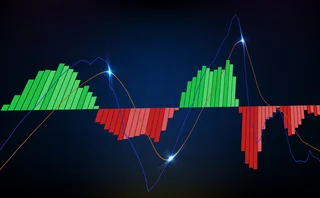
Shrinking dividends may be a mixed blessing
Implied dividends beyond 2009 remain at highly distressed levels, creating torment for dealers and hedge funds with dividend exposures, but providing opportunities for market participants elsewhere.
Worries over a global recession, the nationalisation of major banks, the unwinding of leveraged players and the supplanting of cash dividends for stock dividends have combined to haunt the market since late last year.
Although the market has not seen another drop to match the precipitous fall of late 2008, implied dividends have continued to fall. 2010 Eurostoxx 50 dividend swaps were trading at 56.2 points by early morning today, according to Barclays Capital. This is down from 69.4 points on January 1 - a level that itself was seen by many analysts as unrealistically low.
According to Long, the current level of 2010 Eurostoxx 50 implied dividends effectively prices in a halt to bank, insurance and car sector dividends, in addition to a 35% cut elsewhere. "It's beyond extreme at this stage - it's unprecedented," he said.
Longer maturities have also fared badly. On January 1, 2015, Eurostoxx 50 dividend swaps were at 74.9 points. By early morning today, this had lessened to 62 points, according to Barclays Capital.
Dealers are structurally long dividends due to knock-in put options contained in popular structured products such as auto-callables and reverse convertibles. For investors, this means that if the underlying equities fall below a certain level, the products are redeemed in shares. To delta-hedge this feature, dealers need to hold more of the underlying equities as the market falls - so increasing their dividend exposures.
Through a combination of these exposures and other single-stock business, most banks are long dividends on a net basis. Analysts estimate there is as much as $100 million of exposure throughout the dealer community for each index-point move in implied dividends.
Dividend exposures were a driving factor for many hefty equity derivatives losses at major dealers during 2008. But many of these exposures are already heavily marked down, said one London-based structured products head at a large US dealer.
In recent years, banks have pounced on methods of laying off dividend risk with sophisticated investors, such as hedge funds. Many of these players - including some of the biggest names in the global hedge fund industry - took advantage of the opportunity to purchase longer-dated dividends at a discount.
"Many hedge funds had bought very long-dated dividends. These guys had 10-year dividends in their books, so their mark-to-markets must be horrible," said the London-based structured products head.
Meanwhile, liquidity in dividend swaps has improved since implied dividends shrunk late last year, according to banks active in the market. Dealers say market dislocation is grabbing the interest of some hedge funds that have been otherwise inactive in the dividend market and, increasingly, institutional investors.
"We're seeing some banks reduce their exposure as well as unwinding activity from hedge funds. But there are players out there with money to invest and they are trying to capitalise on those markets that have been pushed to extreme levels," said Alastair Beattie, a managing director in the hedge fund group at Société Générale in London.
Some of these investors are engaging in steepener trades by selling short-dated dividends while investing in longer-dated dividends, he added. By doing this, they are effectively taking the view that dividend levels will improve with an economic recovery over the next few years. Increasing amounts of investors are also trading options on dividends, he added.
With dividends trading as distressed assets, a greater diversity of bank clients has entered the market, dealers report. "There's greater breadth to the client base, which ultimately is a positive development for everyone since it increases liquidity," said Beattie.
Efforts to take dividends to a broader array of market players have also been assisted by Frankfurt-based derivatives exchange Eurex's launch of dividend futures on the Eurostoxx 50 in June 2008.
Providing an exposure that mimics dividend swaps, the products appeal to market participants that are unable or unwilling to trade over-the-counter derivatives. This seems to have had some success - a record 220,000 contracts were traded on the exchange during February. This is an increase of 306% over the previous record month of December last year, when 71,808 contracts were traded in the midst of market upheaval.
See also: Gambling on dividends
Paying for dividends
Uncertain dividends
Only users who have a paid subscription or are part of a corporate subscription are able to print or copy content.
To access these options, along with all other subscription benefits, please contact info@risk.net or view our subscription options here: http://subscriptions.risk.net/subscribe
You are currently unable to print this content. Please contact info@risk.net to find out more.
You are currently unable to copy this content. Please contact info@risk.net to find out more.
Copyright Infopro Digital Limited. All rights reserved.
As outlined in our terms and conditions, https://www.infopro-digital.com/terms-and-conditions/subscriptions/ (point 2.4), printing is limited to a single copy.
If you would like to purchase additional rights please email info@risk.net
Copyright Infopro Digital Limited. All rights reserved.
You may share this content using our article tools. As outlined in our terms and conditions, https://www.infopro-digital.com/terms-and-conditions/subscriptions/ (clause 2.4), an Authorised User may only make one copy of the materials for their own personal use. You must also comply with the restrictions in clause 2.5.
If you would like to purchase additional rights please email info@risk.net
More on Equity markets
The future of equity derivatives: perspectives for UK equities and dividends
Managing equity and dividend risk today requires new trading strategies and products. In a webinar convened by Risk.net and hosted by Eurex, three experts discuss what’s next for the UK and European markets.
Follow the moneyness
Barclays quants extend Bergomi’s skew stickiness ratio to all strikes
What gold's rise means for rates, equities
It has been several years since we have seen volatility in gold. An increase in gold volatility can typically be associated with a change in sentiment and investor behavior. The precious metal has surged this year on increased demand for safe haven…
Breaking the collateral silos – Navigating regulation with a strategic alternative
Emmanuel Denis, head of tri‑party services at BNP Paribas Securities Services, discusses why financial institutions must rethink old practices of collateral management and instead adopt a tri-party approach, with which equities can be managed as…
BAML and Morgan Stanley shift Indian P-notes to Europe
Tax changes trigger move out of Mauritius and Singapore
Volatility traders wrestle with digital risk of Brexit
Skew on major indexes leaps after market wakes up to risks of UK's referendum
New US tax rules could hamper ETN market, dealers warn
IRS’s forthcoming Section 871(m) rules could inadvertently capture legacy ETNs
Dealers fear death of dividend risk premia strategy
Shrinking dividend futures premium hurting investors







